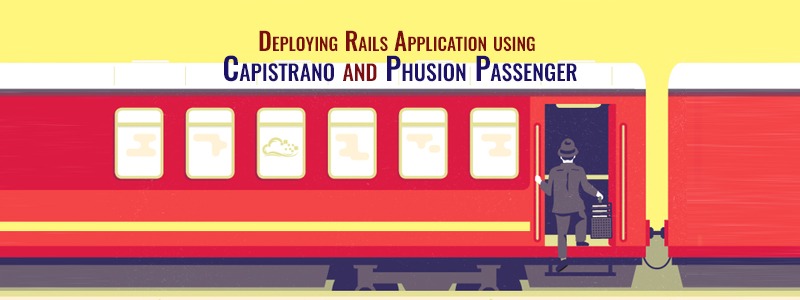What Is Ruby on Rails?
In 2004, David Heinemeier Hansson released Ruby on Rails, a framework for developing web applications. At the time, Hansson was working on a project management platform called Basecamp and was looking for a convenient development tool. As a result of the article published in IAAA Magazine, Hansson became familiar with Ruby. Hansson chose Ruby for enterprise applications because it appeared to be simple and easy to understand. Basecamp was designed by Hansson by himself, including database integrations, controller code, template languages, and other components. Code written for Ruby on Rails became the foundation for the new framework.
What Is Enterprise Application Development?
Enterprise Application Development is a complex process of building applications for businesses. For strict business requirements, those applications are highly customized and complex. Developing an app that is complex implies that there will be a large number of users, that several components will be included, that large chunks of data will be processed, and that difficult commands will be executed in parallel. Most enterprise applications are deployed on cloud platforms or on-premises infrastructure inside corporate networks. It is essential to satisfy a multitude of requirements when designing and developing an enterprise application.
Ruby on Rails is one of the few frameworks that can meet enterprise application development requirements.
With many exciting features, Ruby on Rails is a great framework. We have already discussed some of them in our Ultimate Ruby on Rails Guide. This article will concentrate on Ruby on Rails enterprise application development benefits in order to avoid repetition.
Code consistency
The framework developed by David Heinemeier Hansson is often criticized for being too autocratic in its implementation of much of the infrastructure required by web applications.
It is the framework design that dictates many implementation decisions. While Ruby on Rails limits developers’ freedom of choice, it has the advantage that any engineer working with RoR delivers the same code.
Code written by one programmer is easily understandable by another programmer due to convention over configuration philosophy. For enterprise projects that involve several independent teams, code consistency is especially crucial. As a result, collaboration goes smoothly, development goes quickly, and a larger set of open source libraries can be used to enhance RoR.
Its scalability
The scalability of the software is essential for businesses with rapid growth expectations. Unless you address technical issues, you risk getting into a bottleneck situation that limits your revenue growth. The good news is that RoR-based applications can be scaled easily. The framework allows you to develop an app that manages 10,000-100,000 users working on the same number of objects at the same time. The combined use of Memcached and MySQL allows several million objects to be processed. In cases where the app supports several thousands of users, a monolith architecture will be sufficient. Distributed architecture will be necessary to reach a wider audience.
Other software integration
There are different parts to enterprise software, which makes it a complex product. A stable application requires reliable integration between components and a smooth flow of data between them. With Ruby on Rails, it is not difficult to integrate multiple third-party applications. Integration is made easier by the framework’s libraries. A Ruby/Oracle Call Interface (OCI8) library, for example, enables a connection with Oracle databases.
An environment that is convenient for testing
An Agile approaches emphasize rapid testing of software products as an important principle. During the early stages of product development, bugs and malfunctions are eliminated to increase product quality. Ruby on Rails makes writing tests as easy as shooting fish in a barrel. When you create controllers and models with helper script/generate, a framework for unit and functional tests is automatically generated.
When you fill in the framework, you can write fun functionality with pretty good test coverage. As part of Ruby on Rails, a testing environment is created by default along with a development and production environment. You can test the response of your app without engaging the real browser by simulating browser requests in the environment.
Update-friendly
The purpose of enterprise applications is to provide long-term service for many years to come. The software cannot last forever, and it needs to be updated from time to time. This is also true for Ruby on Rails, which releases new versions every three years. The framework can be updated to the latest version without much difficulty.
Why choose Ruby on Rails for Enterprise Application Development?
It takes a lot of time and effort to develop enterprise applications because they are complex and require a lot of coding. In this way, a simple technology can simplify complex coding projects while reducing confusion.
It is possible to simplify the complexities of enterprise application development by using Ruby on Rails. With its speed and features, it offers the best of both worlds.
Ruby on Rails development services are perfect for enterprise applications for the following reasons:
- Prototyping in a hurry
- The digital revolution has almost reached every company today. Losses occur, however, as a result of the speed of their transformation.
- Known for its rapid prototyping capabilities, Ruby on Rails is a popular technology. Often called “The Startup Technology,” Rails allows enterprises to launch their prototype within a few weeks.
- As well as speed, companies also gain a competitive advantage from the speed at which they launch their products. In order to reach their revenue goals faster, they need a solution to streamline their operations.
- Development that is consistent
- Additionally, Ruby on Rails offers consistency in code, which is another benefit of enterprise applications. All developers who work on the project understand what’s going on because convention over configuration governs the entire development process.
- New developers know where to begin their work even when they join an enterprise application development project. With all the functionality needed for the application, the code is really simple and consistent.
- Furthermore, consistency enables the enterprise to have several independent teams working on the same project at the same time. Therefore, enterprises can deploy teams without hesitation when they have a large project to handle.
- Scalable application
- Scalability is essential when the enterprise is large. When the company grows, what happens when the application needs to be scaled so that other team members can use it?
- A Ruby on Rails web development service can handle a massive number of queries and instances easily due to its scalability. Rails allows enterprises to develop applications that can accommodate 10,000 to 100,000 users simultaneously.
- Scalability is one of the strongest features of the framework. The software is used in the development of Shopify, a platform that claims to have over 300,000 active users.
- A ready-made function
- These plugins or modules, also known as RubyGems, reduce development time by two times. A RubyGem is a readymade function that eliminates the need to rewrite the code.
- RubyGems are available for almost everything. Almost anything can be done with RubyGems, from testing code to integrating payment gateways. A lot of requests can be handled simultaneously by them because they are powerful.
- The repository contains over 133,000 RubyGems that developers can use and implement in enterprise applications. RubyGems are constantly updated and added by the Rails community to make development easy and seamless. We will conclude our discussion of why enterprises should use Ruby on Rails by looking at the final point.
- A large community
- Ruby on Rails has a large developer community. Approximately 6,000 active contributors to the framework continuously update it and provide the best solutions for building enterprise applications.
- Various projects are supported by the community, which provides documentation, support, and assistance. There are many Rails developers available, and they provide services at an affordable rate. It is one of the cheapest ways to get a Ruby on Rails solution for your company if you work with a Ruby on Rails custom application development service provider.
- As new developers join the community every day, it continues to grow. Rails developers can find all the help they need in hundreds of micr communities.
Wrapping Up
One of the best technologies for creating enterprise applications is Ruby on Rails. We saw that it simplifies complicated coding tasks and speeds up product development. Additionally, it contains pre-built modules that reduce the amount of effort required to write the code from scratch. The community continues to grow and evolve. It has everything that an enterprise might need for its solutions, so Ruby on Rails has a bright future.
You can contact RailsCarma for a free consultation if you are looking for the best software development company.





